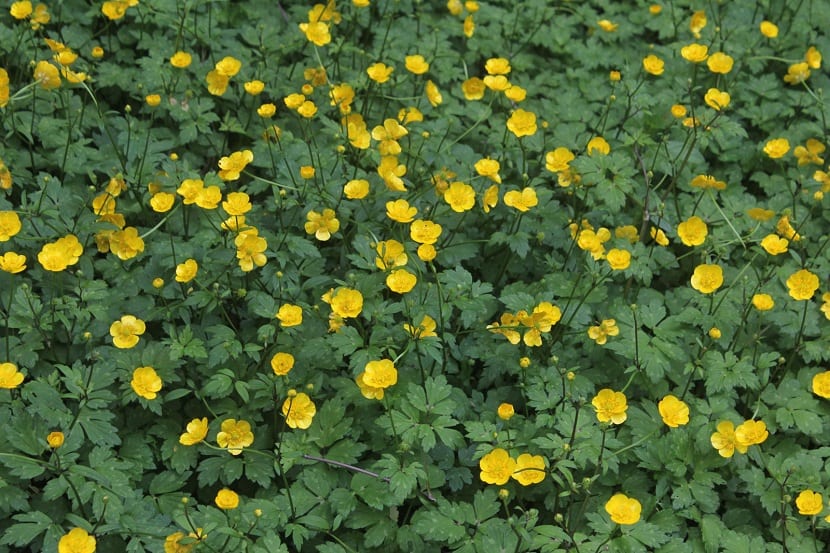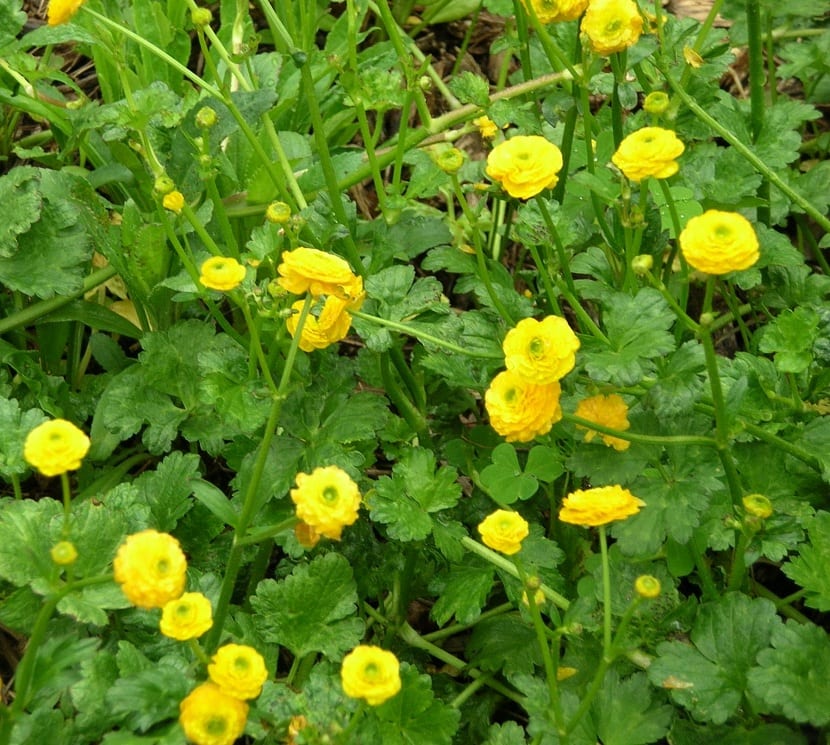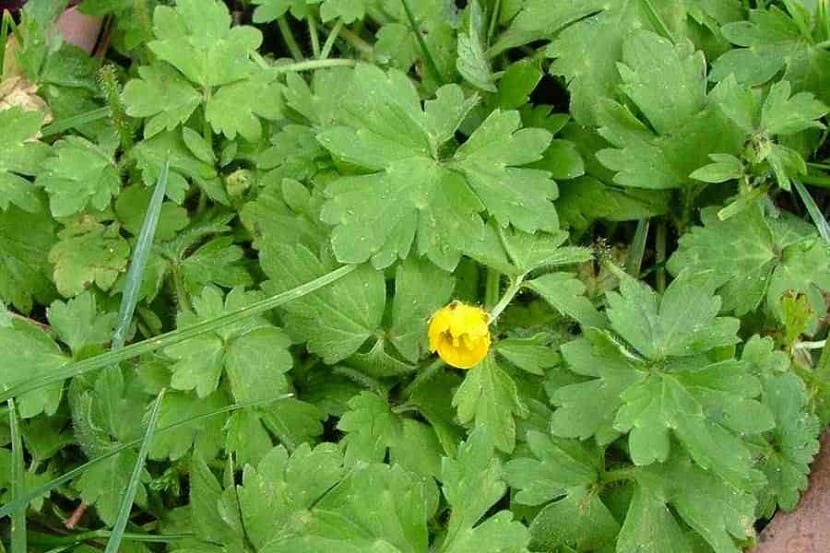
Today we are going to dedicate ourselves to a plant that is useful in various fields. It's about the buttercup. Its scientific name is A creeping frog. It is also known by other common names such as angelito, campanilla, centella, redellobas, meadow buttercup or dog's foot, among others. It belongs to the Ranunculaceae family. It is widely used both for decoration and in other areas.
This article will discuss the characteristics, care and benefits of the Ranunculus repens.
Key features

It is a plant native to Europe, specifically Norway and Spain. It is also native to Asia, both in China and Japan. It is capable of reaching up to 30 centimeters if its care is good. In width it can reach a meter. It attracts anthophiles, dipterans and coleopterans for the pollination of its flowers and their reproduction. So if you have it in the garden, it will surely help you attract pollinating insects to this.
The flowers are hemaphroditic type and yellow in color.. It is recognized because it has a strong smell of honey when you smell it up close. Its leaves are quite simple and deep green in color. One of the great advantages of this plant is that it is capable of growing in numerous zones that extend over the 3 thermal floors: warm, temperate and cold. This gives it a great advantage when it comes to expanding its distribution area.
Uses

This plant is used as a forage plant to feed ruminants such as cows, goats, sheep and buffalo. Its protein content is quite high for a plant. Contains between 18% and 29% of this nutrient. It can be compared with other species such as the mouse killer and the leucaena.
Among the decorative uses we find the ease of being able to create wooded environments and add aesthetics to the garden. Thanks to this plant you can add density to the garden. This will also help us to create understory areas if we have larger tree species in our garden.
In the medicinal field, it also serves as analgesic and for the creation of poultices. Given its high protein content, it can be replaced by other plants in livestock. Its nutritional benefit is high. In this way, it is possible to reduce food production costs by being more balanced.
For cattle, the A creeping frog it is rich in nitrogen and degrades very well in the rumen. It also complements well in silvopastoral systems, where it is used as a fodder shrub. Thus, the animal can browse it directly and eat its flowers.
Needs of the A creeping frog
This plant needs some care if we want to keep it in good condition. The first thing is to take into account the type of soil where we want to develop it. A soil with acidic or neutral pH is better needed. The part that is underground will grow better if the soil has a sandy or clay texture. It can also grow in loamy textured soils, but in less abundance. The soil must remain somewhat moist to maintain the roots well.
Irrigation must be regulated to maintain a level of humidity in the soil sufficiently so that it is always maintained. To have an idea, the best indicator is when the soil is drying out, but without actually waiting for it to be completely dry. We will also take into account other variables such as sun exposure, temperatures and the level of environmental humidity.
The best location is semi-shade or with some sun exposure per day. Depending on the humidity of the environment and the number of hours of sunshine that it gives per day, we will have to water more or less. The same goes for temperatures. Being able to survive in numerous environments, it will need more watering in warmer climates.
We have already mentioned that it can adapt to different climates, so it can withstand frost and other more adverse conditions without the need to be protected. If the frosts are very strong and frequent, that is when we cannot ensure survival. The growth rate is quite fast if the care is adequate. So it is perfect for those gardens that lack some plant cover.
Multiplication

A special point that must be made in irrigation is the need for the soil to have good drainage. We must bear in mind that, when watering, we will need the soil not to accumulate water. Otherwise, we will be causing the roots to rot.
To reproduce this plant we can use the two possible ways. The first is by sexual propagation. Buttercup is easily reproducible through seeds. Its growth rate is high and it does not take long to germinate. We just have to introduce the seeds in a small hole about 5 cm deep and water. In just a few weeks it will have germinated.
Another method used is asexual spread. In this method we find reproduction by means of stakes. These should be planted in the same position as the stem before being cut. The stakes of the most woody part of the stem are used. We can sow it both in a pot and in the final place. In just four days, we see how the stem begins to sprout.
The stakes have to have 3 knots or up to 30 cm in length so they can sprout hence a greater number of branches. The stakes must be planted in the same direction as the plant. This way we make sure that they are not inverted and that it delays or makes the regrowth process more difficult.
It is easier to reproduce them by cuttings than by seeds. It is quite easy and is usually 90% successful in its growth. In the first stages of reproduction we must be more careful with it, since if we plant it in the garden and we have a pet, they can tear them out of the ground and eat the sprouts.
I hope that with this information you can know more about the Ranunculus repens.
